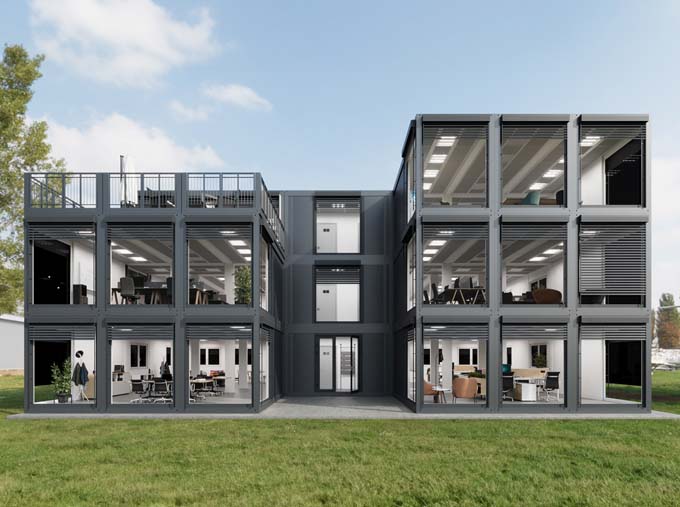Demand-side management in the future Swiss electricity system
The Federal Council recently adopted the report "Electricity consumption. What is the annual electricity consumption for consumers controlled by electricity utilities, such as electric boilers, storage heaters, heat pumps, pumped storage, etc. in Switzerland?". It shows that demand-side management (DSM), the flexibility on the consumption side, is still little used in Switzerland. However, if the band energy of the Swiss nuclear power plants is eliminated in the future, DSM will play an increasingly important role.

The report was prepared in fulfillment of National Councilor Jürg Grossen's 2016 postulate (16.3890 "Electricity consumption. What is the annual electricity consumption for consumers controlled by electricity companies, such as electric boilers, storage heaters, heat pumps, pumped storage, etc. in Switzerland?"). The postulate asks for figures on today's uncontrolled electricity demand in typical time periods. It also asks for information on the opportunities, risks and possible measures if there is less ribbon electricity in the Swiss power grid after the nuclear power plants are shut down.
Demand-side management
Demand-side management comprises measures to optimize an energy system that are brought about directly or indirectly by third parties. One example of this is the ripple control systems that energy utilities use today to control electric storage heaters, electric boilers or heat pumps. This allows them to reduce peak load and balance load distribution.
How great is the potential for load shifting?
How large are the DSM potentials in Switzerland that can be used today and are actually being used? The Swiss Federal Office of Energy (SFOE) commissioned a study on this subject (see link). The data analysis was supplemented with surveys of energy supply companies. The results show that the amount of loads shifted today cannot be determined precisely because the data basis is insufficient for this.
Using analyses of statistics and reports, the study attempted to estimate the DSM potential. This is around 530 to 870 megawatts (MW) for disconnection and around 590 MW to 960 MW for connection of consumer applications. In the case of residential customers, there is potential for space heating, especially during the day in winter. In the industrial and service sectors, the potential is also mainly during the day, but is distributed more evenly over the seasons.
Demand-side management is still little used
Demand for DSM is still low in Switzerland today. One reason for this is that power generation capacities have a sufficiently high flexibility. As a result, there is a lack of economic incentives to make electricity consumption applications available for DSM. However, there are also other barriers. These include a lack of knowledge about the benefits of DSM. In addition, grid usage tariffs can only be made flexible to a very limited extent today, and there is a lack of marketing opportunities in the only partially opened electricity market. Finally, the lack of communication standards and standardization of the technical infrastructure also makes it difficult to call up DSM.
Hurdles to be removed
The lack of knowledge among stakeholders can be addressed by providing information and disseminating research results. The possibility of more flexible grid usage tariffs can also contribute to the spread of DSM. The federal law on a secure power supply with renewable energies provides for such relaxations. Full market liberalization will also create marketing opportunities for flexibility. The planned establishment of a data infrastructure with a data hub also creates more advantageous conditions for DSM by improving availability, exchange, and access to data. This is also important with a view to the future, when other potential flexibility providers, such as electromobility, are added. The opening up of potential providers will then also be supported by the further spread of smart meters, regulation and control systems.
More solutions
In addition to DSM, there are other ways to better integrate new renewables and adapt the power system to the loss of nuclear power plant band energy.
- Through sector coupling, the electricity, heat and mobility sectors are coupled with each other and can be intelligently controlled for the benefit of the overall energy system. Work on this is already underway at the SFOE on hydrogen, heat and mobility.
- Photovoltaics has a great potential in Switzerland, which, however, occurs irregularly. By consuming as much electricity as possible directly at the point of production (high self-consumption), load peaks in the grid can be avoided. Self-consumption can be maximized by combining smart energy managers, controllable loads and decentralized home storage.
- In the future, combined heat and power (CHP) plants can also help to ensure security of supply. The SFOE is also working on this in greater depth.
- There is energy efficiency potential in Switzerland that is still underutilized. The efficiency instruments already in place in the Energy Act are to be strengthened with additional measures in the Federal Act on a Secure Power Supply with Renewable Energies and in the totally revised CO2 Act.
Press release SFO
Click here for the study "Potential Demand Side Management in Switzerland"
and to the report "Power Consumption"









